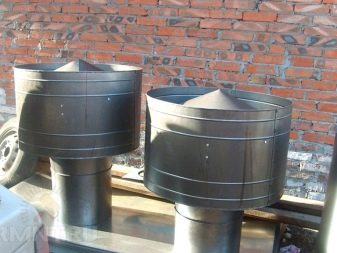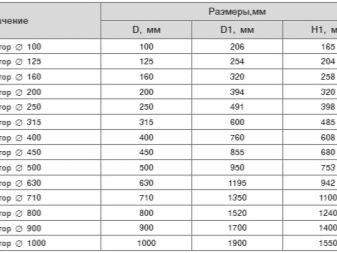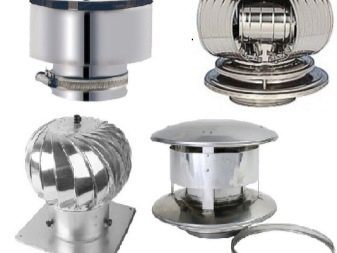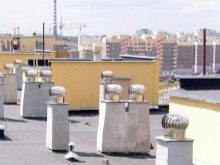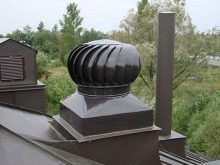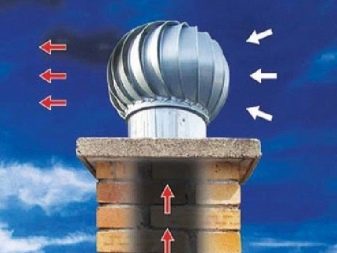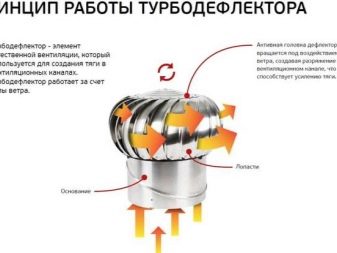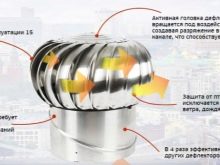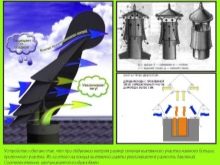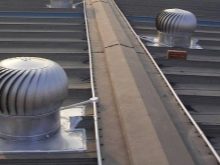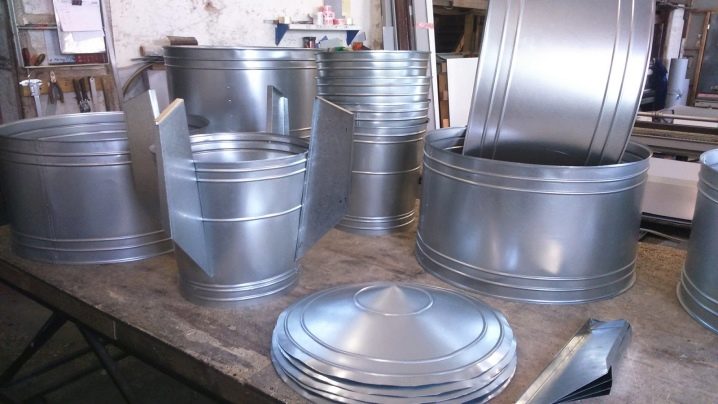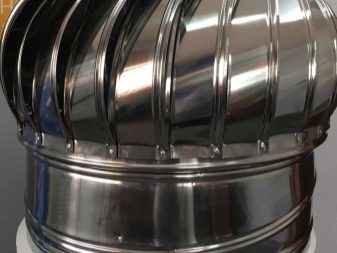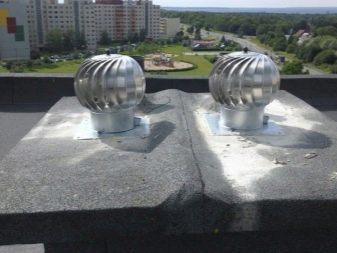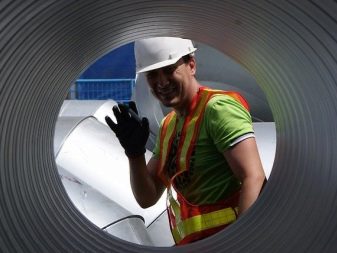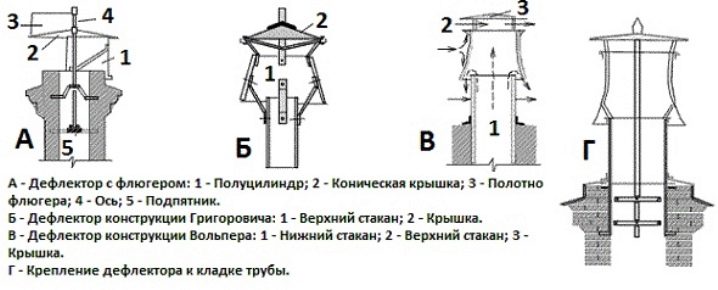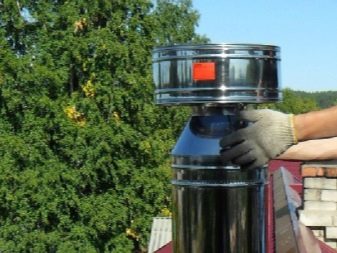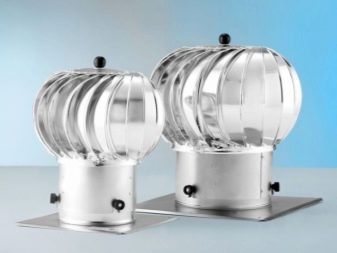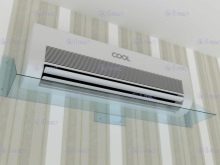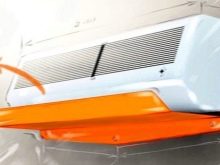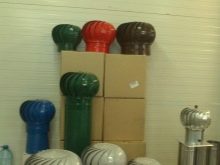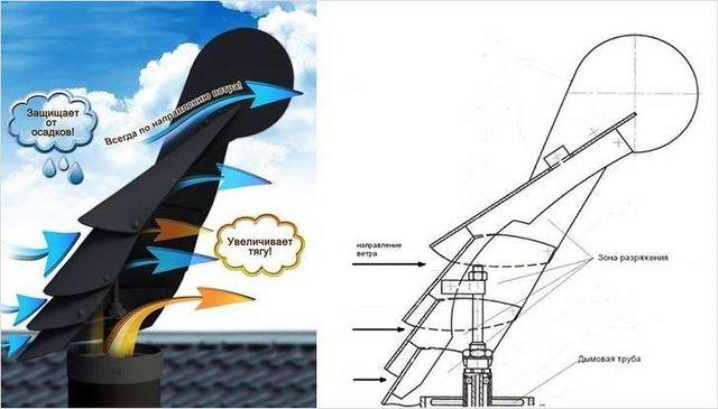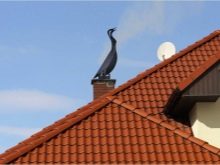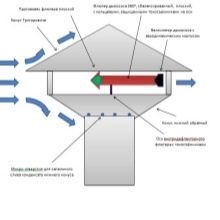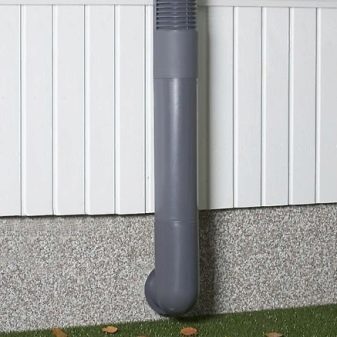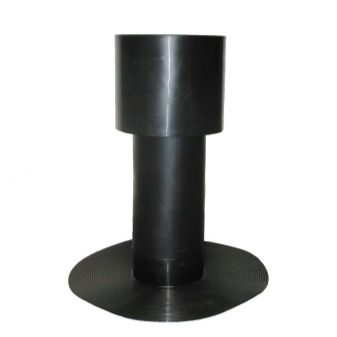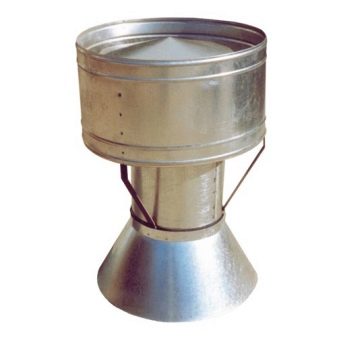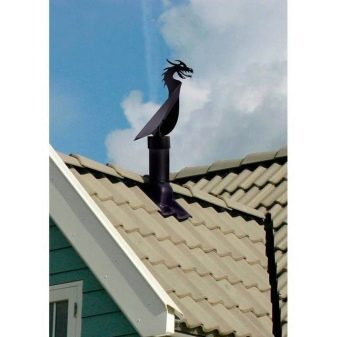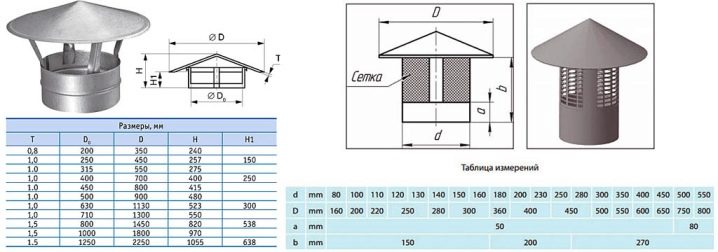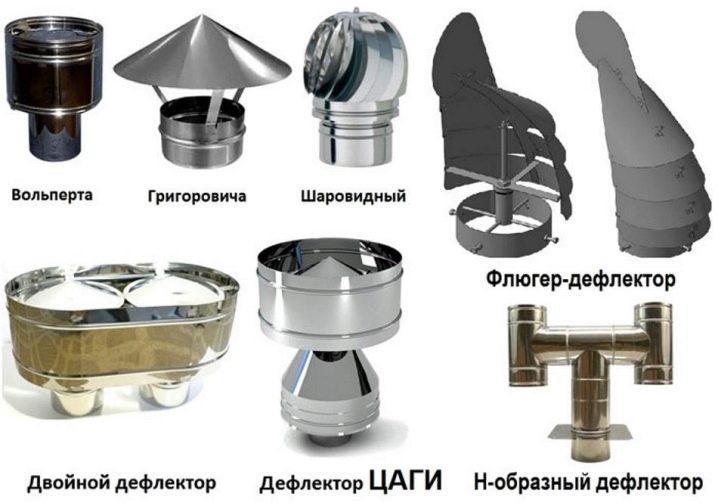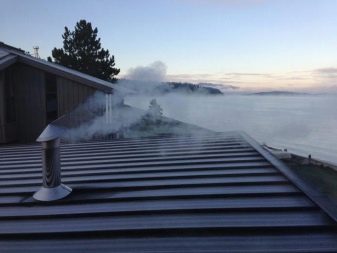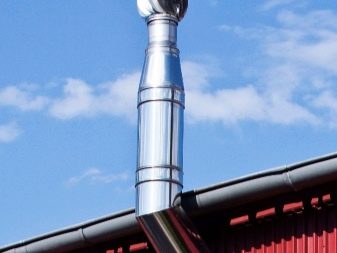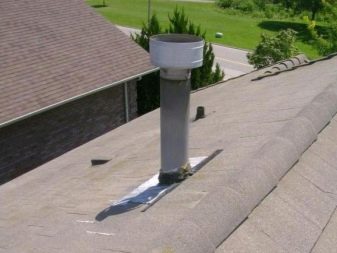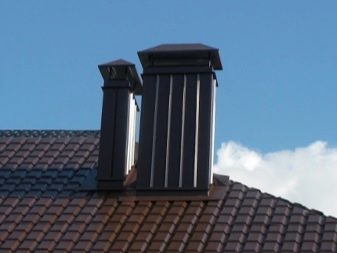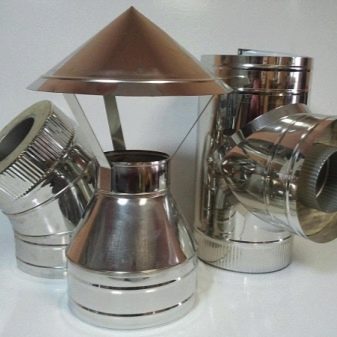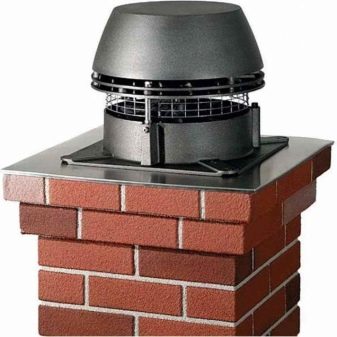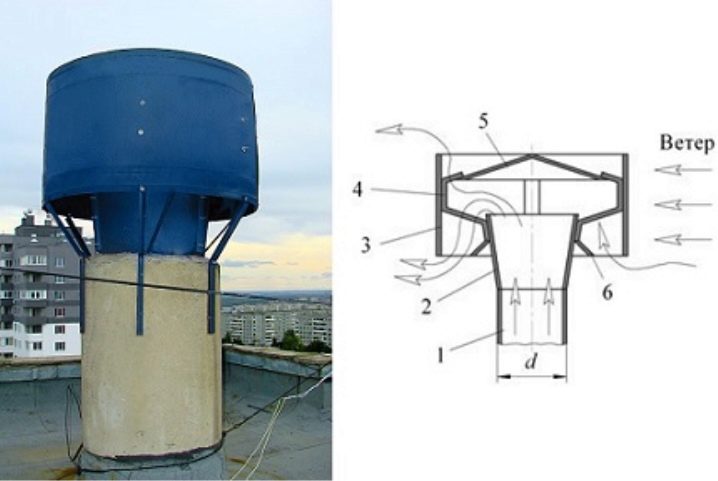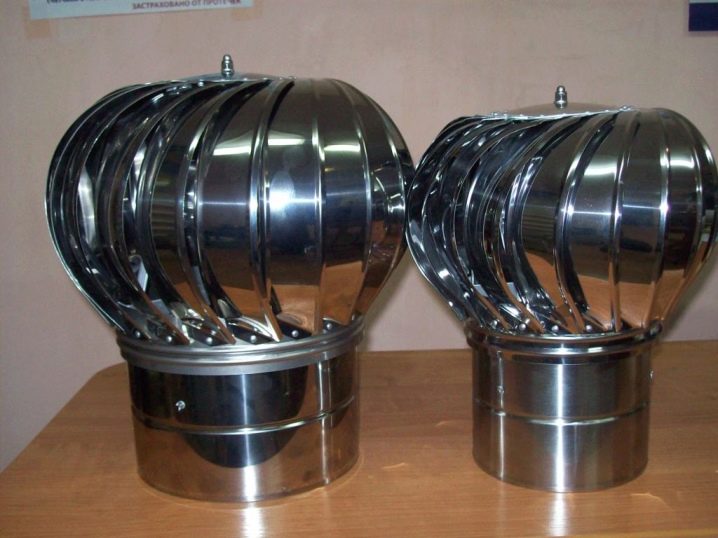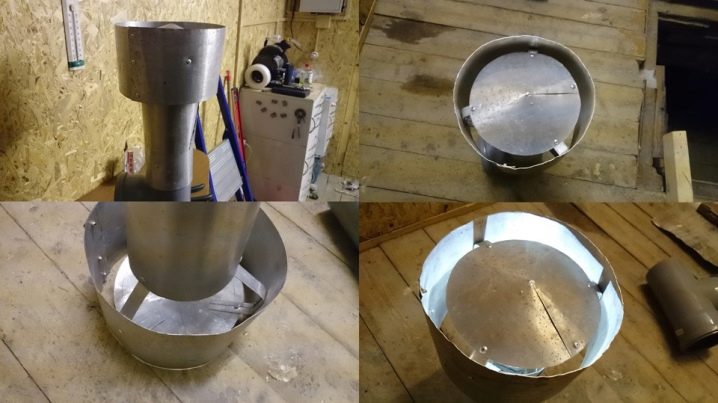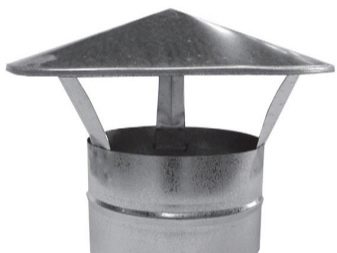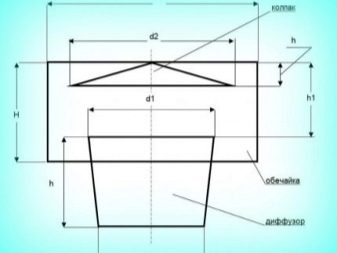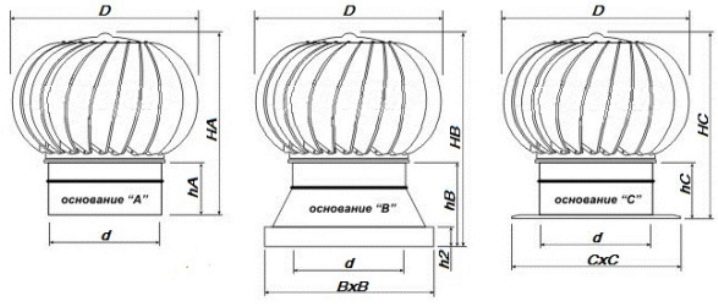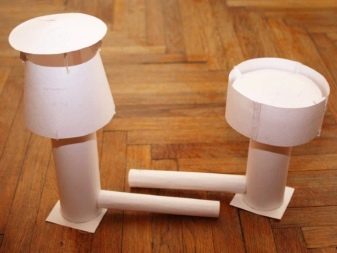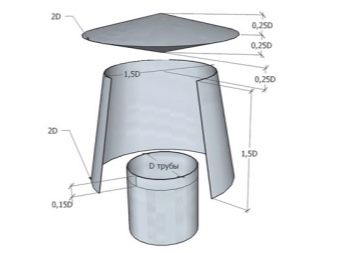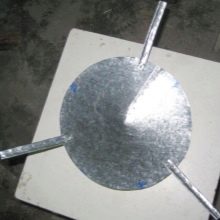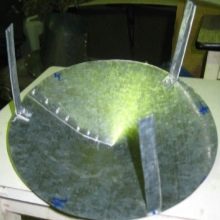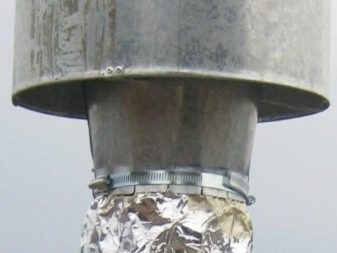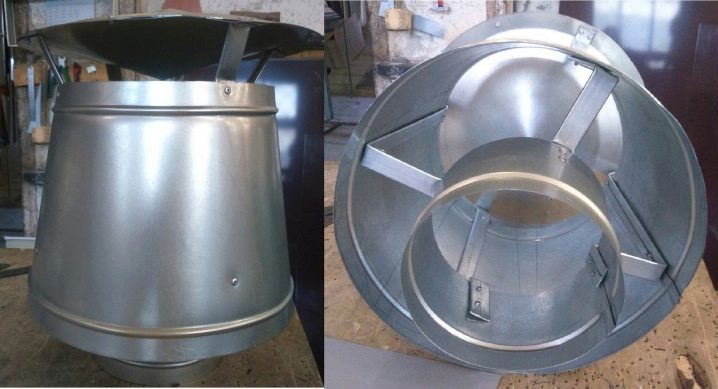Deflectors: what it is, how it works and what is needed?
Properly equipped ventilation mechanism in the house contributes to the freshness and cleanliness of the air inside the premises. The main condition for its functionality is the possibility of effective traction, however, all kinds of garbage and dust can seriously disrupt the functionality of the entire system. In order to prevent such breakdowns, professionals advise to use a ventilation deflector.
What it is?
The mechanism of air exchange in any room is determined by the system of elements that ensure the multifunctionality of its work: inflow and outflow, heating, ozonation and much more. An important role in this is played by the uninterrupted operation of exhaust ventilation, which is supported by increased traction. A device that creates the necessary craving is used everywhere. In the most simplified form, it is a cap that ends the chimney.
Moreover, it is not just an umbrella for protection from birds, butterflies and leaves, but an aerodynamic device that performs the following functions:
- creates protection for ventilation passages;
- promotes uninterrupted load of the entire ventilation system;
- activates the work of ventilation mechanisms.
The ventilation deflector is a very useful device. The only thing that needs to be taken into account when using it is the features of the gas heater that is installed in the house or bath, as well as the roofing material used to cover the roof.
Principle of operation
The ventilating deflector can deviate from any, even the minimal wind blow. However, it is not only deflected, but also fixed so as to create optimal conditions for the efficient removal of combustion products through an equipped chimney. It is important that this process is not hampered by the wind. The mechanism of action of the deflector is that it is attached to the pipe, which removes smoke and fumes and thus creates an obstacle to the free movement of air flow. According to the laws of physics, the more intensively the volume of air in a stream with a varying cross section moves, the greater the pressure drop, which leads to a decrease in pressure.The power of the wind flow acting on the chimney forms a rarefaction near the tip.
The flow of air masses, colliding with an obstacle, flows around it, while the air itself penetrates into the ventilation system through specially equipped holes at the top and bottom, while the air depression increases and directs the direction of the air column upwards. The ventilating deflector functions with optimum efficiency along the mainline with horizontal bends and spans. This is a condition in which the draft of the exhaust of hot air increases by at least 10–20%. Of course, the wind, like other natural phenomena, behaves differently every time. Its influence is different: it can blow the chimney from the top down, in this case small holes located below the deflector will help, it is they who will draw in gases. Wind gusts can be directed from the bottom up, then the air will pass through the annular holes in the upper part of the device. Air masses can move in a horizontal plane, in this case both the upper and lower openings work.
It should be noted that the second most dangerous option is considered, since in this situation the umbrella of the device reflects the air flow in the direction directly opposite to the movement of smoke along with the combustion products.
To level this defect, many masters assemble one more additional cone of the same size as the base one, and connect both elements. Thus, the deflector umbrella is equipped with two multi-directional cones. This allows the device to work with maximum efficiency in all weather conditions. If the chimney is not equipped with this device, grease and soot will gradually settle on the ventilation pipe, to which dust and debris will adhere over time. All this over time causes a decrease in the cross section of the internal ventilation device and further breakdown of the entire system.
Advantages and disadvantages
The advantages of the mechanism include the following:
- effective protection against dirt and all kinds of precipitation;
- increased thrust force.
This device has a simple structure, so it can be easily manufactured and installed with your own hands from affordable inexpensive means.At the same time, there are still quite a few opponents of the deflector, many consumers are asking a simple question - or is it needed.
Went deflector can freeze, become covered with soot and soot, debris, leaves and dust can clog into it. In any of these cases, the inhabitants of the house have a great risk of getting angry. The efficiency of the stove or boiler from the use of the deflector increases slightly, but the device requires regular cleaning and inspection of its condition. If we are talking about stoves and boilers for propane, then routine inspections are required every three months; if we talk about heating elements working with liquid fuel or gas, every six months.
Advice in this situation can be given this - when the house is equipped with an old stove on wood or coal, in which weak traction and the wind constantly blows into the pipes, then the best option would be a simple deflector or a simple chimney made in the form of an umbrella or a simple tent.
But in all other situations it should be well thought out which type of deflector will be optimal for a particular boiler, furnace and pipe.Experts will help to deal with this issue on the basis of their experience and knowledge of standards. They will be able to choose exactly the version of the deflector, which will ensure uninterrupted work, effective traction and complete safety for the inhabitants of the house.
Device
Translated deflector means "reject" and this definition clearly reflects all its functional features.
Depending on the modification, the deflector may consist of different elements, however, all models have the same structural parts as:
- two metal glasses;
- brackets for strong fixation;
- supply and discharge pipe attached to the pipe using a plastic or metal clamp;
- grill to protect the chimney from debris and leaves.
The top cup has a shape that expands slightly to the bottom, but the inner cup is completely flat. These cylinders are worn over each other, both have special holes of the ring type. At the very top of the whole structure, the diffuser roof is fixed on sturdy racks. It has a variety of names - a cap, an umbrella, some masters call it "pommel".The shape of the roof-diffuser can be any, the most common semicircular model, as well as a flat with a lid and gable gable. It is necessary that the diameter of the cap is larger than the diameter of the outlet tube. Otherwise, there may be snow and rain inside the ventilation system.
Purpose
One of the most common options for the practical application of the deflector is the installation on the flue. The fact is that when calculating the dimensions of a pipe, the main criterion is to provide thrust, the force of which is optimal for the effective yield of hazardous combustion products. The use of the deflector creates conditions for increasing the efficiency of the entire heating system in the house by 20%, and this largely determines a good fuel burn-through, a significant increase in heat transfer and getting rid of the problems that are caused by the attenuation of the flame.
In addition, the deflector on the chimney prevents penetration of all kinds of debris and precipitation into the mechanism of the blower. Moreover, it has a good effect on the functionality of the system and significantly increases its service life.
Another popular use of baffles is to mount on the air conditioner. In the strict sense, such a construction rather slightly resembles classic deflectors. These are rather reflecting screens that are used to move air masses created as a result of air conditioners. Thanks to such a deflector, a powerful stream of air moves not on a person, but on the floor or on the ceiling, and then slowly loses its intensity and soon dissipates.
An interesting variant of the deflectors is a rotary (rotary). Such modifications can significantly increase the efficiency of natural ventilation by 4 or more times.
It is noteworthy that it does not require a network of electrical current and other power sources of the device. From a technical point of view, the rotary deflector is a small movable head with moving blades, which is fixed on a solid foundation with special bearings, characterized by zero resistance. If the air flow penetrates into such blades, they set the head in motion, thus the air is strongly discharged and the necessary thrust is produced.
Another well-known variant of the deflector is a weather vane.Technically, it is a mechanism with a rotating body moving in parallel with the curved lines of the visor, which, in turn, converge at the bearing assemblies.
At the very top of such a structure is placed a weather vane, thanks to which the entire device as a whole moves “downwind”. The mechanism of activity is as follows: the air flow passes through the visors, then picks up speed and forms a section of reduced pressure. As a result, the thrust increases, and the heat exchange is significantly improved. Such devices are very effective for preventing the occurrence of reverse thrust, sparks or errors in the operation of the boiler due to the attenuation of fire. At the same time, it is quite easy to build such a vane - it is only necessary to fix the installation on the cut of the exhaust pipe with a special ring with a bearing assembly.
Kinds
About the importance of the deflector in the formation of the necessary reverse thrust and maintaining it in a stable condition, despite any natural phenomena, were thought a century ago. Then, at the Central Aero-Hydrodynamic Institute named after Professor N. Ye. Zhukovsky (TsAGI) on behalf of a completely “young” federal governmentWork began on the improvement of chimneys. The well-known scientists D. P. Grigorovich and A. F. Wolpert were engaged in this problem. They created several effective models of deflectors for various purposes, the most famous of which was the device, named after its creators - the Volpert-Grigorovich deflector. That he was taken as the basis for the creation of more modern tech models.
Despite the wide range of a variety of trademarks of deflectors, they all fit into several typical options on the principle of aerodynamics.
According to the degree of interaction with the thrust mechanism, there are several models.
- Active. This type is distinguished by a built-in smoke exhauster in its structure, while it must work continuously for the entire time during which the fire burns in the firebox. They depend on the energy source and are not used for low power heating systems.
- Active-passive have a low-power exhauster, which is needed only in case of adverse weather factors (storm or no wind), as well as in case of excessively intense heating.
- Passively active. In such modifications, the deflector independently forms its own craving method, independent of the energy source.
- Passive technological options in which there is completely no own thrust.
Depending on the aerodynamic mechanism of the chimney distinguish the following:
- incomplete device - assumes that in the space in which the deflector is installed, there is a special area of strong airing, the so-called pocket, where air, various gases and smoke mixtures accumulate;
- full open - in such structures there is no pocket, however, the wind can easily penetrate into the functional space of the device;
- closed - there is neither a wind pocket, nor the possibility for the penetration of air masses inside the deflector;
- deflector-vane;
- swirl deflector.
From the point of view of manufacturability, the closed baffle is considered the most difficult. However, it has an important advantage: as a result of heating the shell, such devices almost immediately give their own completely non-volatile traction.
This kind of passive deflector is the only onewhich can increase natural cravings even in absolutely windless weather. Separately worth staying on the vortex variants. They easily stand out from the general model range with their “ragged” construction with a protruding sharp edge. It should be noted that the region of vortex aerodynamics has many “white spots”, therefore, it is rather difficult to draw an exact model of the behavior of such devices with varying external phenomena, therefore such models are not in demand and many manufacturers have closed their release.
Selection rules
Choose the best deflector can be based on the goals and objectives that are assigned to it. And also it is necessary to take into account the conditions in which it will function.
A simple chimney is a cap on a wood stove, made in the form of an ordinary umbrella, and has the following advantages:
- holds the necessary traction in conditions of calm, and on the movement of air masses with a capacity of up to 10 points;
- does not form excessive pressure on the pipe, so that even in conditions of a strong storm the chimney remains in its place, it is more likely that the umbrella itself may fall off and fly away;
- has a simple and clear design;
- practically does not coke and does not clog, it is quite easy to clean;
- due to the imperfection of the aerodynamic structure is insensitive to the shape of the umbrella; if the building is located in the windrow, then the smoke can be made in the form of a tent, it greatly simplifies its use and opens up great opportunities for the implementation of design ideas.
At the same time, there are serious drawbacks, such as:
- in case of weak wind, it reduces draft, and the weaker it is, the more the heating element operates. This is quite dangerous, because in cold winter weather, in the absence of wind, the stove can “choke” and burst into waste in residential premises;
- on the strong wind, on the other hand, creates too much traction. This significantly reduces the efficiency of indoor stoves and fireplaces;
- in case of gusty wind, it can cause blowing into the pipe and create the effect of reverse thrust.
In general, a chimney is an imperfect deflector that is optimal for use in regions with a flat climate, where there are almost no hurricanes and storms.
An aerodynamic open model with any wind maintains traction in sufficient limits for the efficient operation of furnaces and boilers on liquid fuel and gas.Such deflectors can frost up, they are easily littered and quickly covered with soot and soot, however, they are easy to clean.
The disadvantages include the following:
- complex body of rotation;
- as a result of the load created by the air masses, the umbrella itself can easily fly off the chimney, and at the same time the mechanism of the device’s action can turn the pipe itself;
- with strong wind gusts of 8 points, the lateral pressure on the structure increases significantly and then increases in accordance with a power law;
- open structures rather poorly knock down a strong dynamic load arising due to gusts of wind, which is why in no case should such a model be placed on brick-made pipes;
- the modification cannot be used for pyrolysis heat-generating mechanisms; otherwise, when wind occurs, all pyrolysis gases will be sucked out and the furnace or boiler will simply go out;
- not suitable for the creation of design elements, as unsuitable for decoration, all sorts of nashlepki and figures only worsen the overall aerodynamic status of the structure as a whole.
By the way, an interesting study was conducted in the United States. There, at one time, they studied issues related to open deflectors and installed them on steam locomotives in order to check the degree of efficiency increase at a low speed. At the same time, the result was the most depressing - on an average run, fire started to burst out of the pipe and not a single train could reach its maximum speed. In general, the open version of the deflector is recommended for all types of heating devices, with the exception of pyrolysis. However, it must be checked and cleaned at least once a quarter. It is optimal for a chimney with low traction force, as efficient as possible for sauna wood-burning stoves, there have not been a single case of people getting burned due to a ventilation vent in saunas.
Closed or as it is called the "perfect" type has such advantages as:
- causes a stable draft, which is enough for furnaces and boilers of any type;
- not prone to frosting and clogging from the inside;
- dust and frost formed on the outside does not significantly change the operation of the device.
There are also disadvantages, however, users assure that they are not so significant, namely:
- when exposed to strong wind gives the maximum pressure on the pipe, and then grows linearly, so the chimney under the deflector should be further strengthened with the help of braces;
- has quite complex structural and technological parameters;
- can not be used as a design element, since any additional elements significantly reduce the overall level of aerodynamics.
Models can vary in appearance, purpose and material performance. Most often, plastic, stainless steel or aluminum are used for the production of deflectors. In rare cases, copper can be a raw material for production. Many users prefer the sandwich model.
Do not confuse the ventilation deflector, sewage model and hood deflector with many other modifications that have no relation to the maintenance of the heating system in homes.
How to make yourself?
The deflectors presented in the stores are manufactured in accordance with GOST 15150-69, however, many homeowners prefer to make the device themselves. Many owners of private houses prefer not to bother and just equip the top of the chimney with an umbrella on a special holder.In fact, this roof device resembles Grigorovich's deflector, but only without a diffuser.
An umbrella does not increase traction, so its use makes sense at summer houses that are not used as a place of year-round living. The owners heat the stove only a few times in the fall and spring, so the cheap option with an umbrella suits them perfectly.
If we are talking about a house or a cottage, the artificial creation of traction is necessary; otherwise, at least 20% of the fuel will be wasted idly. In this situation, you need to at least add a ring to the installation that breaks the wind - this allows you to build some kind of deflector. You can independently make an effective deflector, since its assembly does not require much time and labor. All work will take no more than 2-3 hours.
Making a design that increases cravings on its own includes such basic steps as:
- draw a schematic drawing;
- form blanks;
- directly assemble the deflector;
- fix it on the tube.
The drawing is most correct to make on a sheet of paper. For its maximum accuracy, one should first measure out the dimensions of the nozzle and the cap, and, of course, the length of the deflector itself.To avoid mistakes, you can rely on well-known formulas that are repelled from the internal size of the chimney (d). They are designed by experts and are commonly used when equipping a deflector.
The calculation is as follows:
- deflector height = 1.6–1.7 x d;
- width = 1.2–1.3 x d;
- cap width = 1.7–1.9 x d.
To make the device go faster, after drawing up a drawing, you can create a prototype of the installation of paper, this will allow you to see all possible errors and shortcomings of the project.
Then you should proceed directly to the creation of a metal structure. For work use galvanized steel with a thickness of less than 1 mm. There is an opinion that the best-quality baffles are made of copper, which is to some extent true and justified if unwanted copper plates are accidentally left over in the barn. If it is not (and more often than not), then you should not buy such expensive material, because stainless steel does an excellent job with the tasks assigned to it, and the duration of its service cannot be called small.
The blanks are cut out of stainless steel with special scissors, and then proceed directly to the assembly of the installation. For work, you will need a drill, as well as a riveter or welding machine.It is necessary to take into account that when carrying out welding work it is necessary to follow the safety regulations and be as careful as possible so as not to burn a small part of the structure. In the event that rivets are used, an allowance can be formed for further joining of parts on a special rolling machine. If nothing of this kind was found in the home workshop, then the simplest hammer would fit. When building allowances, it is necessary to fasten the parts evenly with each other, then use a drill to drill narrow holes and install strong rivets. The cap to the base is fixed with legs, they are also pre-made from a sheet of more dense galvanized steel.
When the self-made deflector is constructed, it is necessary to proceed to the main stage - its installation on the chimney. The fixing technology is the same for both self-manufactured devices and those purchased in the construction market. The only thing that needs to be borne in mind is that in order to facilitate the installation, the purchased construction, which was realized in an unassembled form, should be assembled at the bottom and firmly hold all the fastenings.Only after that you need to safely send to the roof. When fixing the structure to the pipe, you should carefully drill the mounting holes, after which you will only have to fasten stronger rivets and make sure that the structure is stable - it should not deviate to one side or the other.
If she staggers, it makes sense to use another clamp. A similar option is used for chimney pipes that are not tiled with bricks on top.
If it is required to fix the deflector not on the asbestos surface, but on the brickwork, special adapters will be needed. After installation, you should check the operation of the device. To do this, turn on the heating and make sure that the installation is functional.
It is worthwhile to dwell in more detail on the basic errors that may arise in the operation of the deflector.
Trouble periodically occur with absolutely all devices and the ventilation deflector in this sense is no exception.
- Incorrect work. As a rule, this defect occurs in those situations when a device of the wrong size was originally selected. It collapses inside the chimney and blocks the "road" for the removal of burning, smoke and soot.To avoid the occurrence of such complications, it is necessary to initially proceed from the standard that the diameter of the nozzle must necessarily correspond to the diameter of the innermost chimney pipe itself. If the mounted deflector has a round or semicircular cross section, and the chimney is square, then you should use special adapters.
- Buying a rotating model in regions with harsh winters. In conditions of frost and snowfall, it can ic up. To correct the defect, you need to climb on the roof and remove the snow with ice manually, and this occupation can not be called pleasant during a frosty blizzard.
- The problem is related to the low or zero efficiency of the device. This happens when the place of installation is chosen unsuccessfully. Even at the construction stage of an effective chimney, it is necessary to take into account the terrain features: it is not necessary to install this object in the zone of increased aerodynamic shade of tall trees and buildings, the deflector should be mounted above the ridge of the roof and other buildings.
- Breakage of the deflector, namely its rotating elements. This often happens if the device is installed with your own hands from low-quality materials, then the steel begins to rust and crack.To avoid this, it is necessary to regularly check the condition of the structure and lubricate the bearings. If the failure has already occurred, then it makes sense to make a new device.
- Dangerous consequences fraught with the installation of a simple cap. In bad weather, it can be covered with ice or it can bring snow. If this happens at night, all hazardous products of combustion will remain in the house and this can even lead to the death of the household. That is why it is better to install a technological deflector right away and not to make dangerous experiments with various umbrellas and visors. Separately, it is worthwhile to install a spark arrester, however, this requirement is optional and is left to the discretion of the home owner.
To learn how to make a deflector with your own hands, see the video below.

